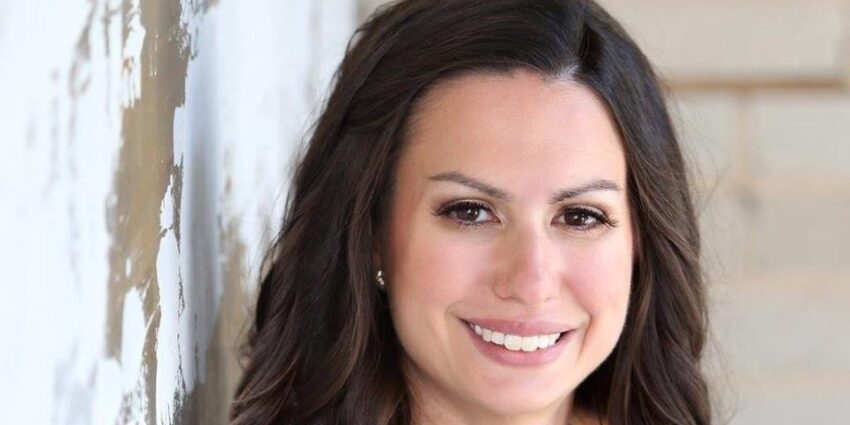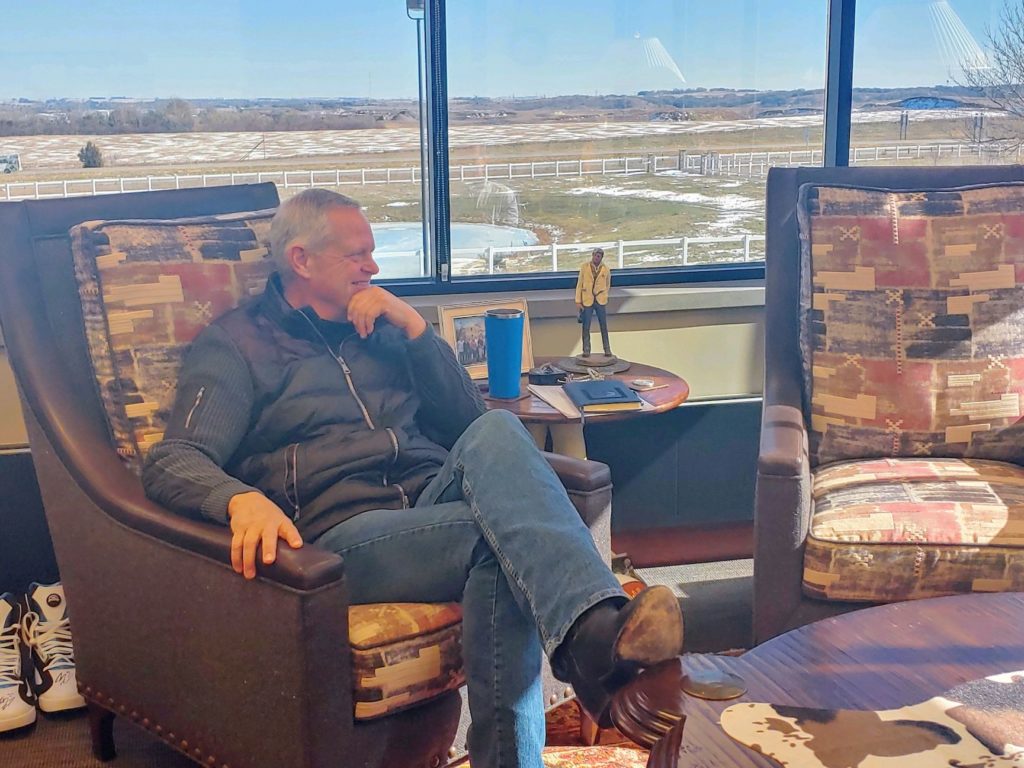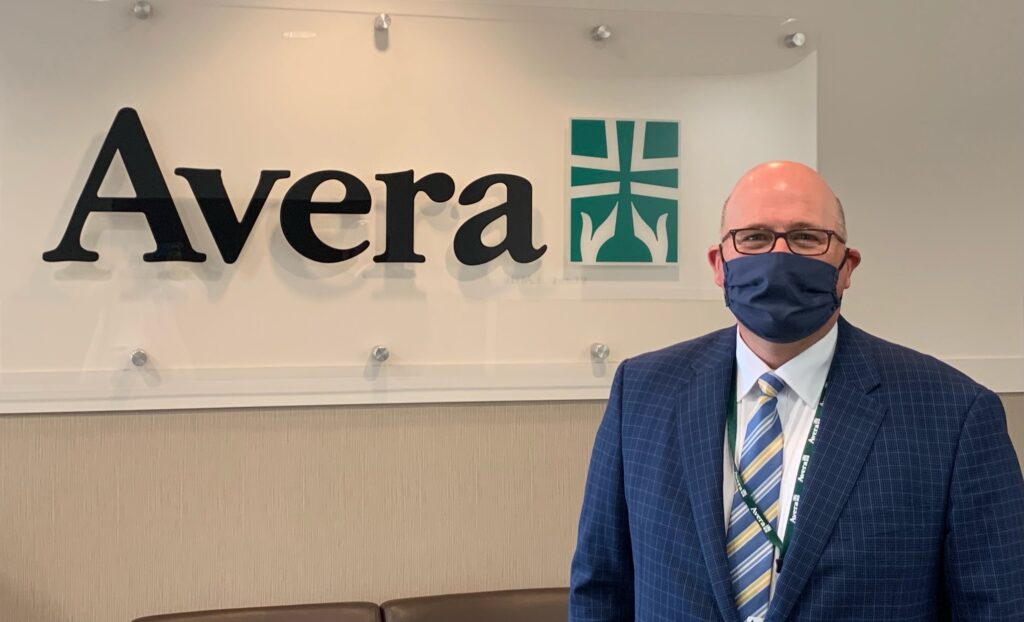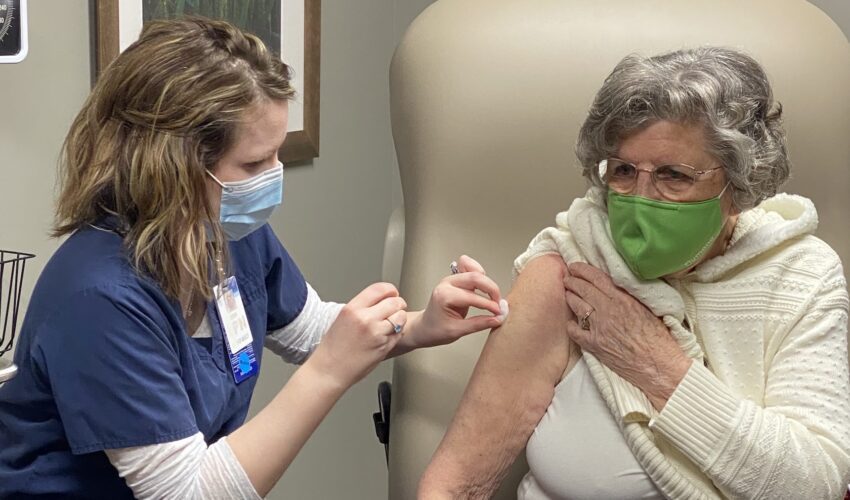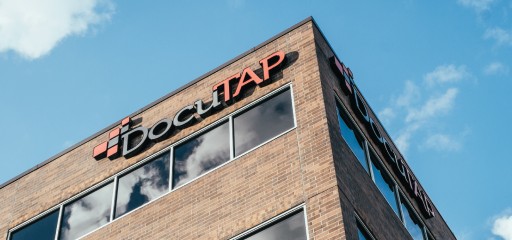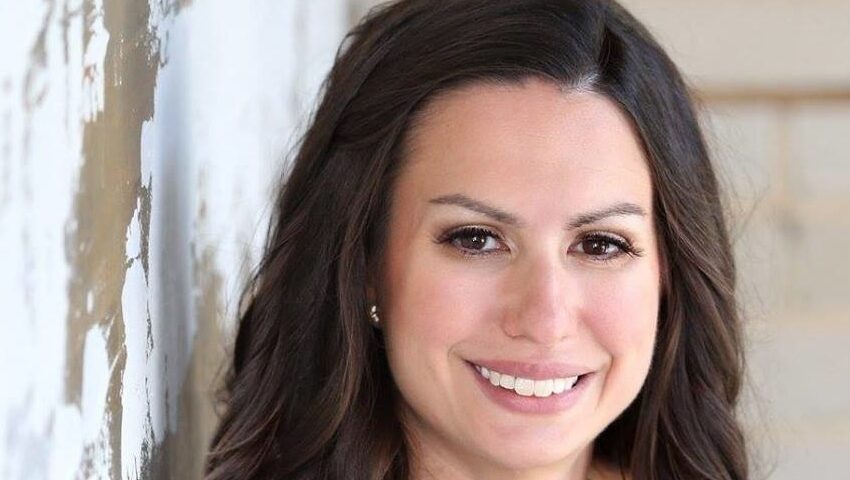Jodi’s Journal: COVID, quarantine and the CEOs
Nov. 19, 2020
I’m not really a rule breaker, maybe a rule bender, but I broke a rule of journalism you should know before this goes anywhere else.
I became part of the story.
But I think you’ll agree it’s a pretty good story.
It’s also not the story I thought I’d be writing. A few weeks ago, by total coincidental timing, I was scheduled to interview both Avera Health CEO Bob Sutton and Sanford Health CEO Kelby Krabbenhoft on the same day.
What were the chances, I thought? In one day, I’m going to get a really comprehensive look at the state of health care in this community.
And then Sutton had to reschedule. So that angle was out.
Avera apologized, telling me he’d been looking forward to the interview and promising to reschedule as soon as possible.
So it was Krabbenhoft and I who sat down in his office that afternoon, shortly after Sanford’s merger with Intermountain Healthcare had been announced, for an overarching conversation about the health care field, the Sanford organization and, of course, the pandemic.
Take a look at the resulting story. I think it’s a really interesting glimpse into his mindset going forward and what we can expect from this merged organization.
So that was that. Or so I thought.
The following night, I’d just gotten home from work when I got a phone call from Kimber Severson, Sanford’s chief marketing officer, who had been with me for the interview.
I’m pretty sure I answered the phone with: “Don’t tell me something happened with the merger.”
Oh no. Not even close.
“I just wanted to let you know that you’re going to be getting a call from Dr. Allison Suttle,” Severson began.
OK, I thought. COVID is getting bad. We must be talking surge.
Again, not even close.
“Because yesterday during your interview, you were exposed,” Severson continued. “Kelby tested positive for COVID today.”
I’ll skip how I initially reacted, but it wasn’t long into the conversation that I said something to the effect of, “You know, if he gives it to me, I’m going to have to write about it.”
I think we both just sighed. 2020 strikes again.
Then Suttle called, and I got to hear the same directions countless other South Dakotans have in recent months.
She would like me to quarantine for 14 days. She explained what that meant – I didn’t have to completely isolate, but I should do my best to stay away from people, and if I had to go out, I needed to wear a mask. If I developed symptoms, she wanted me to get a test.
Full disclosure: We had been in Krabbenhoft’s office for about 90 minutes. We sat quite far apart, but we didn’t wear masks.
Based on the circumstances, Suttle gave me a 30 percent chance of contracting the virus.
I was most worried about the people I’d seen earlier that day, which included my dear and higher risk friends Dave Munson and Jim Woster, who had stopped by the office to visit.
My first relief was that I’d worn a mask around them and that we were spaced way apart. My biggest relief was when Suttle told me I would not have been able to infect them because the incubation period for COVID-19 was longer than 24 hours.
So the wait began. I kept going into work, but my co-worker Rosemary McCoy worked from home. When I was around anyone, I put on a mask.
I took extra vitamin D, drank some tea and threw in a little immunity-boosting essential oil for good measure.
I figured by day four or five my best chance for showing symptoms would arrive. When none did, I waited for day seven. At that point, Suttle had told me if I hadn’t shown symptoms I likely wouldn’t. I could have gotten a test just to see, but my quarantine still would have been 14 days.
I never developed symptoms, so I never got a test. And I did honor the quarantine. It was back to online ordering, curbside pickup, not going anywhere on the weekend. Thank goodness for football.
Oh, speaking of football, I texted Krabbenhoft that Sunday to ask how he was feeling.
“Have cold-like symptoms,” he replied. “Anxious to get this behind me.”
At least the Minnesota Vikings won.
I figured we’d share the experience with all of you at some point. And then this week, he decided to share it with his staff.
“I contracted the virus,” he wrote in an all-staff email. “Felt the uncertainty that accompanied the word ‘positive,’ endured the symptoms, complied with the quarantine and all protocols, experienced the lagging cough and fatigue … but I’m back in my office, working on the priorities of Sanford and most of all focusing on making sure we live up to the expectations of everyone who trusts us with their care.”
He went on to talk about the pandemic updates he continues to receive, how he and his fellow leaders have tackled everything from staffing to ventilators and vaccines. The future is bright, he reminded them.
“My optimism is held quietly, however, because of those who are hurting emotionally by this virus, because we have lost family members to this virus and that this virus has seemingly found a way to divide so many from a common struggle that appears to have a remarkably positive outcome,” he said.
He sent the email and then got on a plane to head to a meeting out of state.
When he landed, the replies had come flooding in.
And most of them thanked him for sharing his experience and expressed gratitude for his recovery, he said.
“It’s just been so much different information and things I thought it was time to let everybody know I did have it and I’m back in my office working,” he told me.
“One of the reasons I wrote the letter is a person’s mental attitude about health, about getting up out of bed, moving, being positive, not living in fear, I think doctors tell us that does have an effect on someone’s outlook and their ultimate health. There were a couple times when I have real bad coughing spell or felt lousy. I thought, ‘Uh oh, am I going to be that one in a million?’ and then you have to catch yourself and say no you’re fine, you’re good, you basically have flu symptoms, get out of bed, get in the shower.”
His COVID-19 experience started like many.
“The first couple days, you felt almost like oh no way, this is nothing,” he said.
Then, he had a low-grade fever, about 100 degrees. Not enough to cause concern.
“And then I was good for a couple days, and then I started coughing,” he said. “And nothing was in my chest, it was just like a spontaneous cough and things kind of dwindled there awhile. I never got achy, I did lose my smell and taste, but that was about it.”
He still hasn’t regained taste and smell. There is a lingering cough, “which is really, really typical,” he said. And he’s tired by about 6 p.m. “Really tired.”
He believes he contracted the virus from a friend and colleague after watching college football in his backyard. He doesn’t believe anyone else contracted it – his wife, kids and grandkids who were in close proximity were fine.
He told his employees they likely won’t see him wearing a mask at work, as he believes he is no longer susceptible nor able to transmit the virus.
“I’m going to try to make real good, common-sense decisions, so I tried to explain why I am coming to the issues that I am,” he said. “When I’m at Hy-Vee, I’ll wear a mask. I’m not going to put some clerk in a tough spot. I’m going to be respectful and sincere about all that. But when I’m working day in and day out, they’ll see me in meetings, and there’s no reason for me to wear a mask.”
The experience has left him with a new sense of empathy, though.
“Anytime a leader can actually experience something beyond the intellectual or emotional understanding of something, but actually physically and in real terms experience what other people are going through, especially in health care, it just gives you a tremendous advantage to be compassionate about it,” Krabbenhoft said.
“And also to be practical and be realistic and give people hope.”
For me, the experience was proof that the system created to slow the spread of COVID-19 can and does work. As soon as Krabbenhoft showed symptoms, he was tested. As soon as the positive result came in, there was contact tracing. So I was able to isolate before the virus would have had time to make me infectious.
I just wish we as a country could have gotten to the point where this works on a broad scale.
But that’s just the start of the story.
Remember how I said my interview with Avera CEO Bob Sutton had to reschedule?
Well, his staff booked it for a couple of weeks later.
And as I was half-whining to myself that I had to wait two weeks for his story, I stopped. Two weeks? In COVID time, that means something.
But it couldn’t be, right?
I had to ask.
So when we finished a really interesting conversation about Sutton’s vision, the system’s current master plan and, of course, the pandemic, I got to the last question.
“I just have to ask you,” I said. “You rescheduled this interview. About two weeks later. Were you sick?”
Yes, he was.
“My COVID presented as a runny nose and a sore throat, but it wasn’t just a normal runny nose,” Sutton told me. “It was like I couldn’t keep up with it, and it was just so strange. And the sore throat kind of followed relatively quickly behind, so I knew there was something.”
His positive test came back the night before we were supposed to meet.
“Your first reaction, and I consider myself relatively healthy, but you first get the positive test, and it’s communicated by phone, and you get the information and the instruction. And it goes through your mind: Am I going to get a mild case? Am I going to be able to isolate at home? Am I going to get hospitalized? Am I going to experience shortness of breath or something more severe? Those things run through your mind. There’s an emotional reaction immediately. How is my body going to react to this? You can have two very like people test positive and have different reactions and symptoms. When you start thinking about it, it’s quite emotional.”
The first thing he did was isolate, he said.
“And I completely isolated in my home. I did not see my wife during the entire 10-day span other than through the patio door. She would stand outside and wave.”
The first few days brought just the sore throat and runny nose.
“It started getting me the afternoon of day five,” Sutton said. “Never shortness of breath or elevated temperature.”
He monitored symptoms with a thermometer and pulse oximeter from Avera’s home health service.
“For me it was a headache,” he said. “And when it intensified, it was an intense headache with some lightheadedness, almost like a brain fog. I slept a lot. There was fatigue, no question. When I woke up on day eight, it was noticeably better, and from there it kept getting better and better.”
On his first day back at work, though, he was ready to call it at a day at 4:30 p.m.
“I’m OK now, but for a few days I was tired,” he said.
“I just felt really good about the fact that I didn’t have to be concerned that me being away left Avera not in extremely good hands, like it left some sort of a void. We just have a leadership team at every level, and they said, ‘We’ve got this, we will step up, we can and will.’ And that meant a lot to me.”
He also has an enhanced appreciation for the toll on families, as his wife’s isolation kept her from seeing her mother who has cancer. Neither got the virus.
The experience “absolutely” left him with a broader perspective on the pandemic, he said.
“Those front-line caregivers who are caring for people who are COVID-positive, our long-term care facility employees taking care of residents who are COVID-positive, you just have greater appreciation for their concern about being exposed and taking it home to their families,” Sutton said.
“The second thing, and I think equally important, is I think it actually made me realize for all our neighbors and friends in our region who have gone through this, there’s a bit of anxiety associated with it. And afterward, I’ve really been more conscientious about wearing my mask and being careful. And you might question why after. People don’t know I’ve already had it. It’s hard to lead by example when people might recognize you and know what you do. It doesn’t give me a hall pass to not wear a mask.”
He’s gone over and over it in his mind but can’t tell where he might have contracted the virus.
“We stopped by and picked up carryout from time to time but always in a mask. In a grocery store,I was in a mask. I do not attend large community events I would have really liked to have been at. With my personality, I want to be at the chamber annual banquet and the pheasant festivals. I want to do those things. I could not with that large of a group. I could not and did not,” he said.
“Even when you’re careful, there can be times you contract this virus.”
Honestly, I could have gone either way with telling you this story at this time and asking these CEOs to share their experiences. I’m sure it would have come out anyway. But my hesitation was this:
To the teams at Avera and Sanford: Your leaders really, really care about you. They bring you up with me any time we talk. They truly consider you their big, extended family. And I didn’t want the fact that they got sick to make you think in any way that they have minimized the seriousness of this pandemic and the strain under which you are operating. I think it just shows this virus is infectious enough that it can find any of us.
Our community’s health systems now are led by two CEOs who understand what COVID-19 means in the most personal way possible. They have had the symptoms, experienced the uncertainty, worried about their loved ones and appreciated the quality of care we enjoy here.
I think our shared approach to navigating the rest of this pandemic actually could be stronger because of that.
“We know with all of the discussion and all the conversation going on about vaccines that there are going to be things happening relatively soon and I think that’s important,” Sutton said.
“I think if we can just take prudent action and be responsible, we really can continue to take care of the people who really need the care. We’re not done yet, but it’s not the time right now to throw in the towel and be tired of COVID fatigue and move on. We’re right there to getting through this, and we just need to make sure we take that responsibility and do this together.”
I really hope the worst of this might slowly be leaving us. I’m seeing people take more precautions, the therapeutics are improving, and the vaccines are coming. Keep doing your part. Keep leading with empathy as these CEOs are modeling. And, like them, we’ll all get better.

